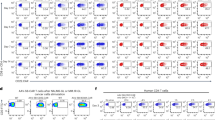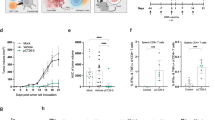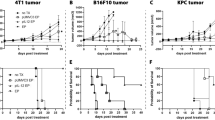Abstract
The efficient genetic modification of solid tumors in situ to stimulate therapeutic immune responses against them is currently under active investigation, but is not yet possible using existing gene transfer technologies. Thus, ex vivo/in vivo vaccination strategies have been proposed in which the patient’s tumor is surgically excised, single cell suspensions are prepared, the therapeutic genes are introduced and then the gene-modified cells, after being γ-irradiated, are injected back into the patient. However, even with high- efficiency gene delivery systems, this is a labor-intensive process. Moreover, it is often difficult to obtain sufficient numbers of gene-modified primary tumor cells during short-term culturing. On the other hand, extended in vitro passaging of primary tumor explants may alter their immunophenotypic properties. One approach to overcome these limitations would be to design universal vaccines consisting of standardized gene-transduced neoplastic cell lines or mixtures of gene-transduced cell lines, to be combined with autologous tumor samples if available. Melanoma, which is notable for being one of the most immunogenic human malignancies, represents a cancer where shared tumor- associated antigens have been identified. We developed and analyzed several different retroviral vectors for their ability to stably express exogenous genes at high levels in a panel of melanoma cell lines. All vectors contained a reporter gene (nlslacZ) encoding β-galactosidase with a nuclear localization signal and the neomycin phosphotransferase (neo) gene as selectable marker. One vector, DCCMV, which carried a bicistronic nlslacZ-neo transcriptional unit under the control of the human cytomegalovirus immediate–early promoter in the U3 region of its 3′ LTR, was found to perform consistently better than the other vectors. The DCCMV vector, which is an extreme example of the double-copy class of retroviral vectors, was subsequently used to generate melanoma cell lines constitutively secreting human interleukin-6 or a soluble form of the human interleukin-6 receptor for potential use in a phase II clinical vaccine trial for the treatment of melanoma patients. The DCCMV vector design may also be useful in gene therapy applications where the intent is to implant polymer-encapsulated cell lines genetically engineered to stably express high levels of bioactive proteins.
This is a preview of subscription content, access via your institution
Access options
Subscribe to this journal
Receive 12 print issues and online access
$259.00 per year
only $21.58 per issue
Buy this article
- Purchase on Springer Link
- Instant access to full article PDF
Prices may be subject to local taxes which are calculated during checkout
Similar content being viewed by others
Author information
Authors and Affiliations
Rights and permissions
About this article
Cite this article
Wiznerowicz, M., Fong, A., Mackiewicz, A. et al. Double-copy bicistronic retroviral vector platform for gene therapy and tissue engineering: application to melanoma vaccine development. Gene Ther 4, 1061–1068 (1997). https://doi.org/10.1038/sj.gt.3300500
Received:
Accepted:
Issue Date:
DOI: https://doi.org/10.1038/sj.gt.3300500
Keywords
This article is cited by
-
Mechanism of Reduction in Titers From Lentivirus Vectors Carrying Large Inserts in the 3′LTR
Molecular Therapy (2009)
-
Gene therapy in transplantation
Gene Therapy (1999)



